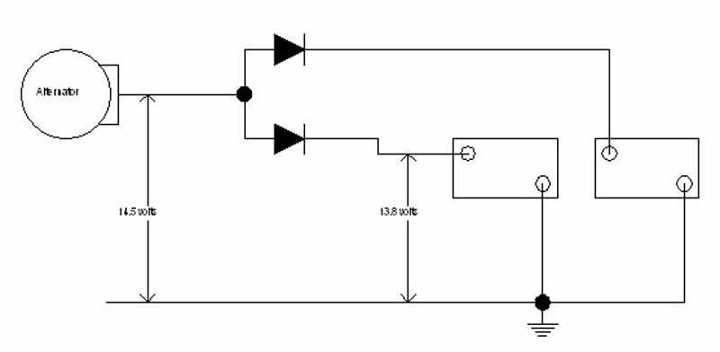DiploStrat
Expedition Leader
Not Quite Crazy ...
But close enough.
I have always understood dual diode isolators to work like this:

Some, like yours, allow you to reach around the diode with a sense wire, thus allowing the alternator to run at a higher voltage to compensate for the loss. As you noted, some alternators have to see voltage at their output terminal in order to turn on. I am not sure of how to solve this problem with a diode system. (Some Sterling Power products, which also use diodes, but for other purposes, have a bypass terminal to allow battery voltage to appear at the alternator output terminal.) dwh knows what he writes about and I would consider his counsel carefully.
As I have noted, I simply prefer other solutions to the problem.
Happy wiring!
But close enough.
I have always understood dual diode isolators to work like this:

Some, like yours, allow you to reach around the diode with a sense wire, thus allowing the alternator to run at a higher voltage to compensate for the loss. As you noted, some alternators have to see voltage at their output terminal in order to turn on. I am not sure of how to solve this problem with a diode system. (Some Sterling Power products, which also use diodes, but for other purposes, have a bypass terminal to allow battery voltage to appear at the alternator output terminal.) dwh knows what he writes about and I would consider his counsel carefully.
As I have noted, I simply prefer other solutions to the problem.
Happy wiring!
